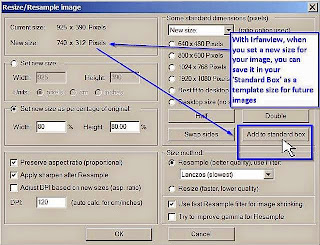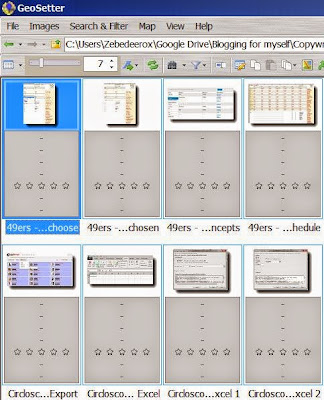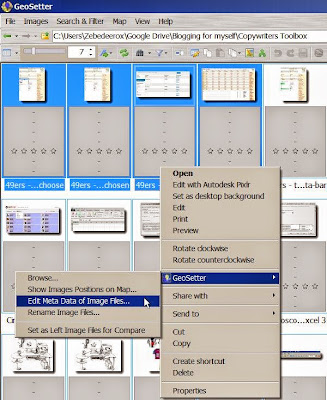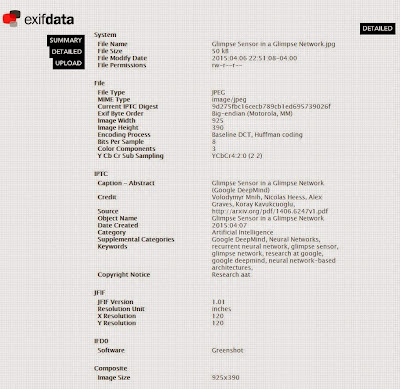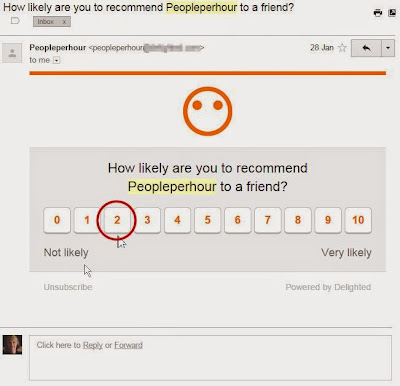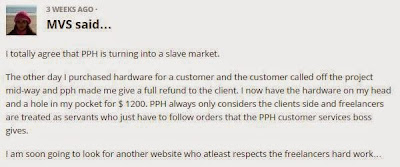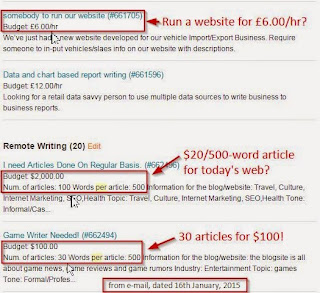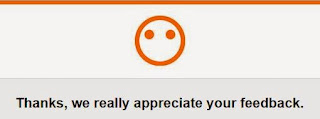So there I am on Tweetdeck when I see a captivating headline flick into a stream: Human Emotional Filter and its Effects on SEO.
Okay, interesting topic,
thinks I.
Off I trot to indulge myself and perhaps learn a little bit before giving the Tweet a like and a RT. That was it - my sole intention: a quick squint and maybe a social interaction.
But what a rabbit hole the click through to the host's site proved to be. And what a monster I found hiding in the shadows amongst the mouldy carrot tops.
SEO - you must deliver on every level of your promise
The problem is this. When you promote yourself as an expert - in anything - you raise people's expectations. By offering a tutorial, as the headline in the Tweet that so interested me implied, you've set your stall out thus.
And when you further consider the topic of that headline, you'd expect the author/Webmaster to get that. The biggest Human Emotional Filter in SEO is, after all, trust. As someone looking for enlightenment, as I was, the Tweet garnered implicit trust.
To have that emotion, which I'd already let loose on a rollercoaster ride, derailed by a barrage of advertisements as soon as I clicked through the Tweet was an unexpected blow.
Trust? Broken.
User intent and Webmaster responsibility
I've seen enough of the Webmaster to deduce that it wasn't his intention to break that trust. Especially after going to the trouble of creating a captivating headline.
But most site visitors don't have forgiveness built into their DNA. In our on-demand Internet, transparency is just one strand surfers expect as a matter of course.
Webmasters have to accept that responsibility. We're culpable for everything hosted on our domain. That includes any ads, their volume and their intrusiveness. And talking of intrusive, pop-ups were also a UX-killer on the SEO hackers' post to which the Tweet led.
You might think I'm being pernickety. Ads are part and parcel of the web; it's how many Webmasters fund their site.
And pop-ups? Get with it, right? I was going to a marketer's website and he knows that the money is in the list. What was I to expect?
The UX - it's not all about page load speed and navigation
The copy, headline et al, is a part of the UX. One could argue that, when the searcher's intent is to learn, content is everything.
SEO isn't, of course, that black and white. But ask yourself this:
if a visitor can't trust the content on your page, how will they ever trust the ads and pop-ups surrounding it?
If you do not care about the reader, the visitor whose trust you've earned with a jazzy headline, then fine. Let's not fool anyone. You're not looking to convert them as a customer. You want traffic volume to boost your ad revenue, end of.
Now, I don't often call others' bad webpages out. But it's this type of practise that's kicking SEO when it's down. And the SEO Hackers' article to which I refer is a prime example of when good intentions turn bad.
It's a shame. The premise of the article is excellent; it even goes on to explain some of the concepts well.
The problem, then? The content is littered with punctuation and grammatical errors, all of which I've edited within the content itself. Is that bad? Well, for an expert, getting the fundamentals wrong is a great way to blow trust. Plus, we have this video on spelling and grammar from Matt Cutts:
Where the SEO Hacker's content's format and style contradicts Google's Webmaster advice for compliant websites, I've added footnotes and relevant quotes.
In this day and age, where sex isn't predetermined we shouldn't apportion it. If you're talking about 'Mr Roberts', then fine; say 'his' and 'he'. But where you're referencing 'a marketer' or 'an SEO', use 'they' and 'their' (and not the recent propensity to patronise women by referring to all non-specified gender roles as 'she' and 'her').
Speaking German or French? Fine. All nouns have a gender and you could maybe get away with assigning gender. In English? Keep it non-gender specific.
SEO Hackers neglects the use of bullet lists, too. If you want to emote your readers, you have to show them the benefits at a glance.
Great swathes of text are the greatest way to hide benefits in plain sight. Add long, rambling sentences, you hide the meaning and context from search engines, too.
The result is that your content is good for neither human or machine. Along with the additional reasons I give after this embedded edit:
- search engines will struggle to find anything on the page as it exists they're able to index with confidence;
- visitors will struggle to gauge the concepts as SEO Hackers leaves too many questions, supplementary or otherwise, unanswered.
I've no doubt that Sean, the author, has a specialist field. But it's not copywriting. As an expert, he should know when to draft in help when his credibility in other areas is jeopardised by his weaknesses.
It's no slight on your expertise if you struggle with content. Draft your thoughts then get an expert editor to present them in a way that will reach - and emote - your prospects. Herewith, then, the edited SEO Hackers' text:
Human Emotional Filter and its Effects on SEO
Tags: copywriting, emotion, psychology, seo Source: https://seo-hacker.com/human-emotional-filter-effects-seo/ A note from the editor:This is my edited version of SEO Hackers' post. General style and grammar edits I've made here are [in green]. My footer and further reading note references are [in superscript]
The web is a place for people. Truth is, the Human Emotional Filter (HEF) plays a big role in SEO. That’s plain, simple fact.
SEO has extended [from] just being a technical, code guru into a job that requires multiple masteries that [extend] to the field of:
- [marketing;
- copywriting;
- functionality;
- and even design.]
So what’s the human emotional filter and how does it affect SEO?
The Blueprint
We as human beings are wired to feel. We feel happy, we feel sad, we feel wanting, we feel satisfied, we feel angry, we feel excited. We have emotions running in and out of our hearts day in and day out.
There is a blueprint that has made us who we are. People nowadays act out of what [they] feel. This is depicted in movies “Follow your heart”, even if [oft-times] what we feel is not the best decision at all.
Unfortunately, in sales and in laws of attraction, what is logical is boring, unprofitable and is also generally hard to sell.
Do you [realise] that every time someone lands in your webpage, you are selling your page (its content, its design, its functionality, etc.) to them in exchange for their time, and perhaps, money?
Every time a user [visits] your site, that user has the chance to improve your site’s User Activity (UA) or leave (which is not a good thing to your UA profile). So what do you do?
You make them stay.
How do you make them stay?
Create things [on] your website that pierce their Human Emotional Filter.
Make them feel.
Trigger-Happy
There are ways you can attract a user’s attention and lead them on in the content of your website. [Here] are some of the things that are happening ([that] you need to take care of) from the moment they [land] to the time they [leave]:
1) Site Design / Theme
A [visitor lands on] your website, looks around, decides if the ‘look’ speaks of a good, trustworthy brand and is worth [their] time.
2) Great Copywriting / Video Content
The [visitor] reads some of the above-the-fold content or video about your product or service and finds himself excited or wanting.
[ed] - be careful about what you put above the fold. Too much will impair the UX; see Google Webmasters' advice on the topic[1]
3) Branding – The user goes ahead and looks at your about page, clients you’ve worked with, your team and company history and tries to feel in their gut if you’re someone who they could trust.
4) Subscription – The [visitor] likes what he sees and subscribes to your news-feed in [hope] of receiving more of the great information from your website.
5) Conversion / Loyalty – The [visitor] comes back through your news feed and decides [they trust] you enough and you have a good brand and reputation, so [they go] ahead and purchases your product.
Before you get into that sweet 5th step, there [are] the critical first two steps wherein the Human Emotional Filter plays a huge, huge part. You need to make them FEEL who you are by making them see, read, watch and hear what they can get out of you.
Our favorite [subject] is ourselves. So make sure the first two steps are all about your users.
[ed] The practise of inserting multiple links in such a confined space, ▲ as above ▲, is wrong on so many levels. 11 here, 10 in 10 lines!
▼See image▼ and note [2]
image: too many URLs in a short space goes against Google's advice for mobile-friendly websites (see notes, below)
The Tricky Part
[3] [ed][…?]Is that I can’t really tell you exactly what:
- you should write in your website;
- how your video should go;
- what you should say;
- what content you should write.
The Human Emotional Filter is an extremely customized, reactive decision-maker. So your website has to be extremely customized to fit a person’s wants/needs in order to pierce their HEF positively.
How does all this Affect SEO?
[3] [ed] […?]Simple. The better you are at piercing a person’s Human Emotional Filter, the easier you are in getting them to convert and stay loyal to your brand. First of all, it affects your site’s User Activity by positively affecting your Dwell Time Metrics (DTM).
The more people spending more time in your website in a lot of your pages, the better. This factor is very difficult to fake, buy, and manipulate especially with the accuracy and intelligence that Google has farmed over time through a lot of website’s Google Analytics data.
Secondly, it positively increases user interaction, which, chances are, will reflect on your social signal data. People who like the feel of your page and who can relate to your content will probably give you a Tweet, +1, Share or a Like at the very least.
Thirdly, links. Need I say more? ◄[Yes - this is a tutorial][4] [ed]
Some Actionable Steps to Help you Out
Generally, here are some of the things you can directly take out of this entry:
1) Use strong eye-catching words above the fold (usually in your article title) like ‘Sex’, ‘Discover’, ‘Free’, ‘Help’, ‘Know’, ‘Money’, ‘Powerful’, ‘Secret’, ‘Proven’, ‘Save’, ‘Trust’, ‘Understand’.
2) Create strong branding pages such as an About Page, Company History Page, Meet the Team Page, etc. ◄[using "etc." in a tutorial is lazy][4][ed]
3) Start doing Email Marketing! Mailchimp is a free email marketing service company, you can start there. That’s how over 1,000 SEO Hacker readers keep on coming back here (you can sign up on the form on the right sidebar) ◄[don't be lazier still] [4][ed]
Start piercing your user’s Human Emotional Filter. Chances are, your competitors are still stuck in the field of doing technical SEO. Your creativity and ability to emotionally communicate with your users is your best asset – it is not easily replicated.
Notes referenced for advice and further reading:
"As we’ve mentioned previously, we’ve heard complaints from users that if they click on a result and it’s difficult to find the actual content, they aren’t happy with the experience. Rather than scrolling down the page past a slew of ads, users want to see content right away.""Small or tightly packed links or buttons are more difficult for users to accurately press on a touchscreen than with a traditional mouse cursor. To prevent users from being frustrated by accidentally hitting the wrong ones, tap targets should be made sufficiently large and far from other tap targets that a user can press them without their finger pad overlapping any other tap targets. The average adult finger pad size is about 10mm wide (a bit less than half an inch)…"[3a] This is the disconnect. We understand the value of conversational search with the implementation of Hummingbird. But asking a question as a title then going straight into an answer without referencing the context leaves the door open to ambiguity.Yes, use questions as headers. But make sure you format the subsequent answer to stand alone as a statement, too.[3b] The same sentiment, ambiguity, is relevant to the body of your content. When using 'articles' as the subject of a sentence, make sure that you clarify to the reader to what entity from the previous sentence that article refers.[4] Don't start what you can't finishTerms like 'Need I say more', 'Goes without saying', 'Self explanatory', 'etc.' are lazy. You're providing a tutorial. Visitors unfamiliar with your topic visit your website to be educated, not to leave with unanswered questions.If you are going to add context but not outline its purpose, at least provide a link so that those who've come to learn can at least complete their education. Not explaining in full looks lazy. Not providing a link if you can't be bothered lazier still.Same goes for referencing other parts of your site. The 'Mailchimp' sign-up form wasn't in the sidebar (either one) If your advertising changes, update your content. And, if it's an affiliate link, be sure to declare that you could benefit from users clicking it.Dangling thoughts are to site visitors what dangling nodes are to the web: roads to nowhere. If your website is a no through road, don't expect much traffic. ◄ Tweet this
To view just the edited article with footer notes, I've put them together in this Evernote shard





